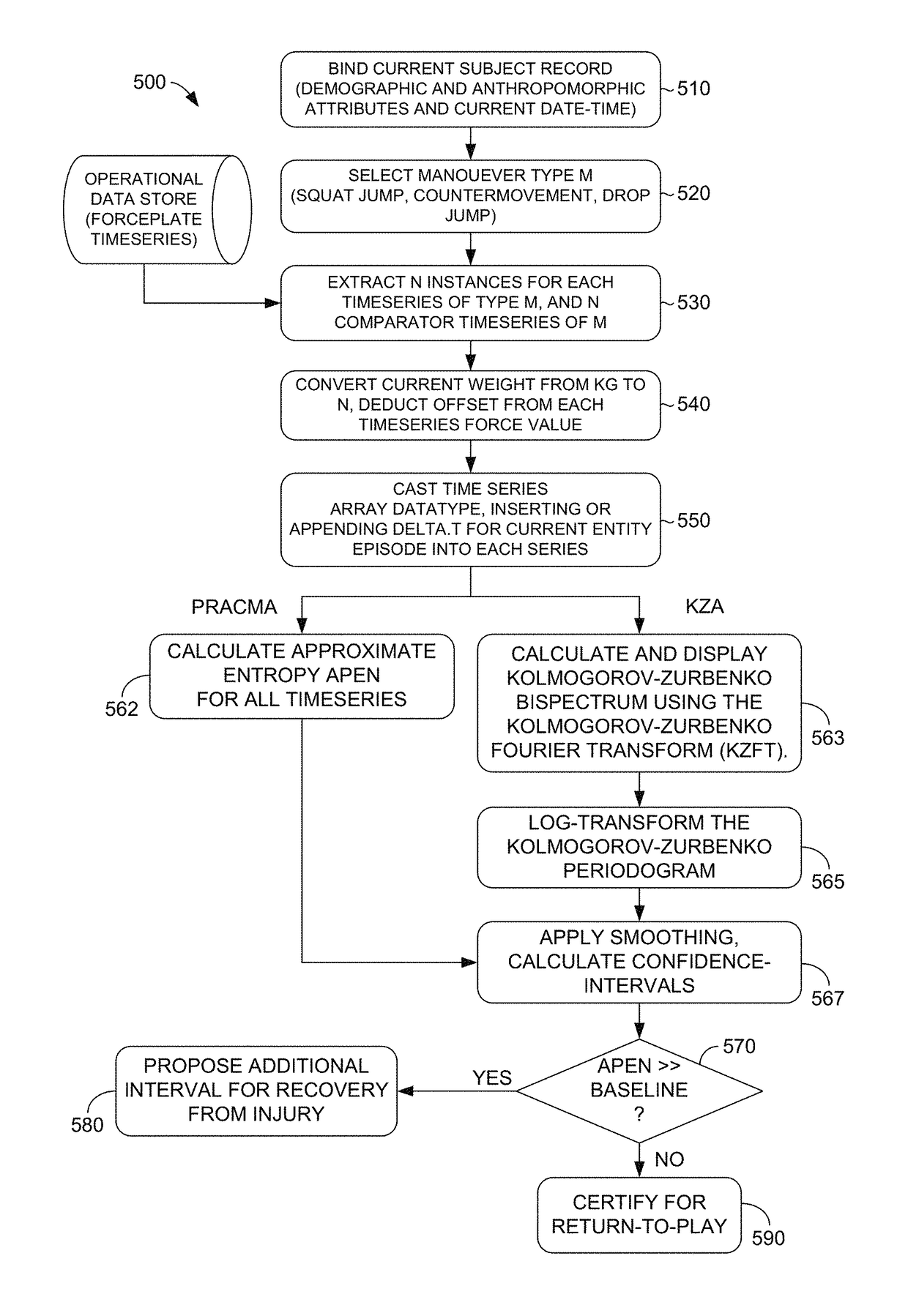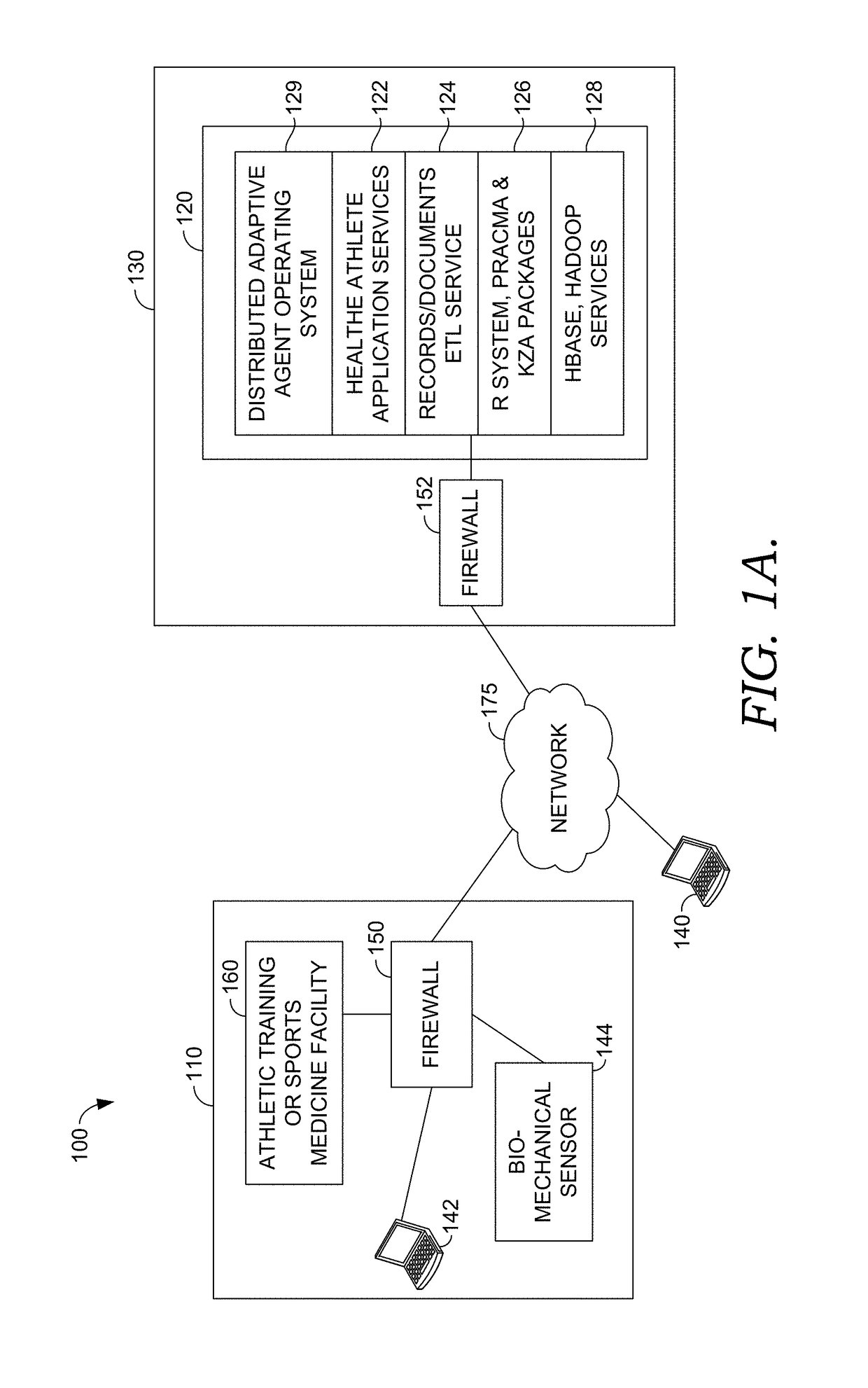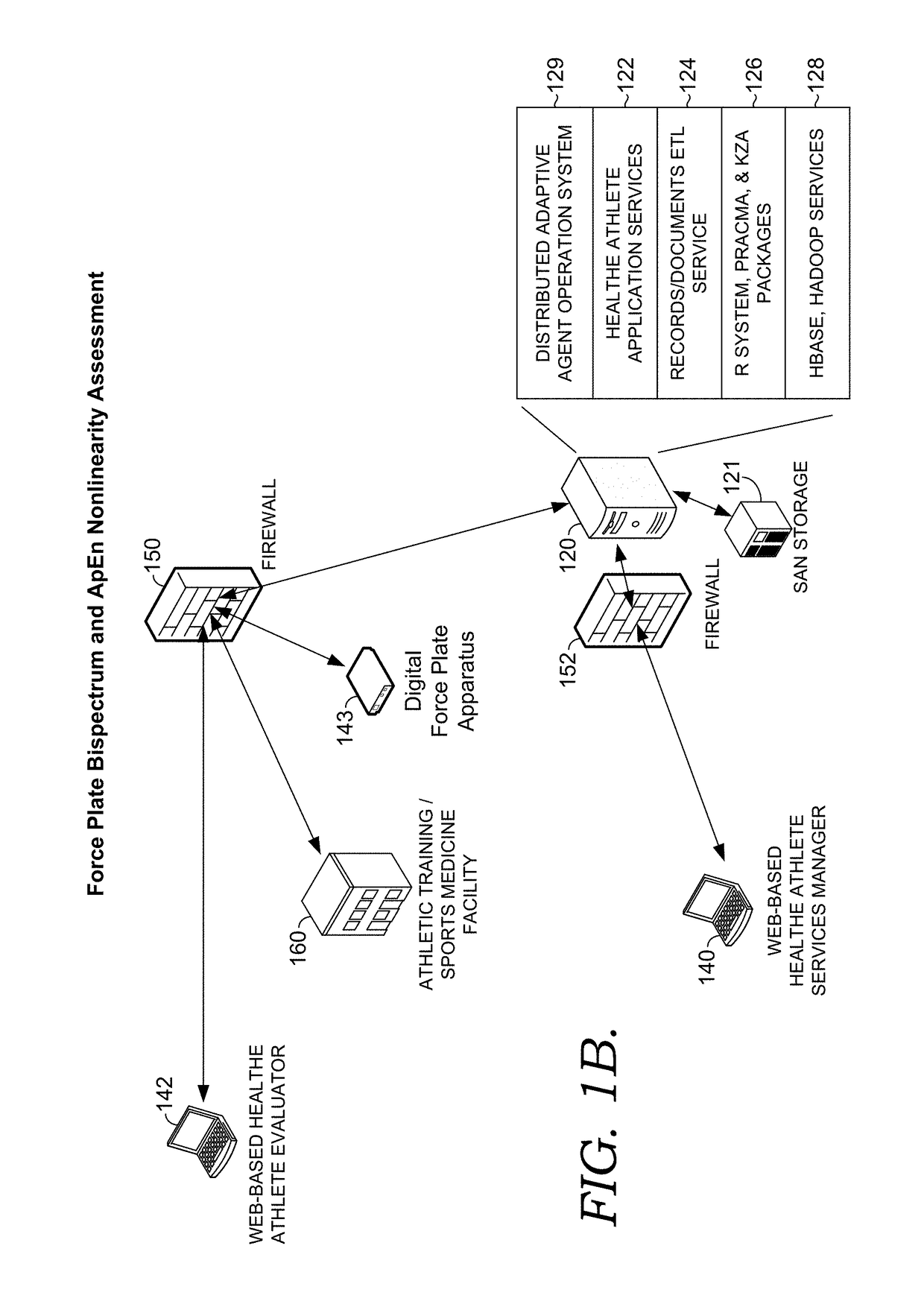Assessing fitness by entropy and bispectral analysis
a fitness and entropy technology, applied in the field of assessing fitness by entropy and bispectral analysis, can solve the problems of subjective self-reporting of symptoms by the athlete, the difficulty of assessing trainers, therapists, physicians, etc., and achieve the effect of facilitating patient injury management, improving athlete training, and preventing a percentage of recurrent injuries and long-term disability
- Summary
- Abstract
- Description
- Claims
- Application Information
AI Technical Summary
Benefits of technology
Problems solved by technology
Method used
Image
Examples
example 1
[0041]The following example embodiment implements a forceplate bispectrum subsystem that was reduced to practice using a server cluster running the Linux operating system, the open-source statistical software package R, and the R packages kza and pracma. Cerner CareAware iBus® was used to capture time series from a Hall Effect force plate with 600 Hz sampling rate and 12-bit ADC. Force plate time series, ApEn, and bispectrum, data were stored in Cerner Healthe Athlete® information system, which was also used to store player demographics and anthropometric variable information.
[0042]After granting informed consent, volunteer amateur basketball players were studied using a protocol that involved standard squat jumps on both a standard strain gauge laboratory force plate and a portable Hall Effect sensor force plate. To emulate conditions of play and patterns of neuromuscular recruitment and fatigue, the protocol involved 10 warm-up jumps at approximately 50% of the 1RM maximal force a...
PUM
 Login to View More
Login to View More Abstract
Description
Claims
Application Information
 Login to View More
Login to View More - R&D
- Intellectual Property
- Life Sciences
- Materials
- Tech Scout
- Unparalleled Data Quality
- Higher Quality Content
- 60% Fewer Hallucinations
Browse by: Latest US Patents, China's latest patents, Technical Efficacy Thesaurus, Application Domain, Technology Topic, Popular Technical Reports.
© 2025 PatSnap. All rights reserved.Legal|Privacy policy|Modern Slavery Act Transparency Statement|Sitemap|About US| Contact US: help@patsnap.com



